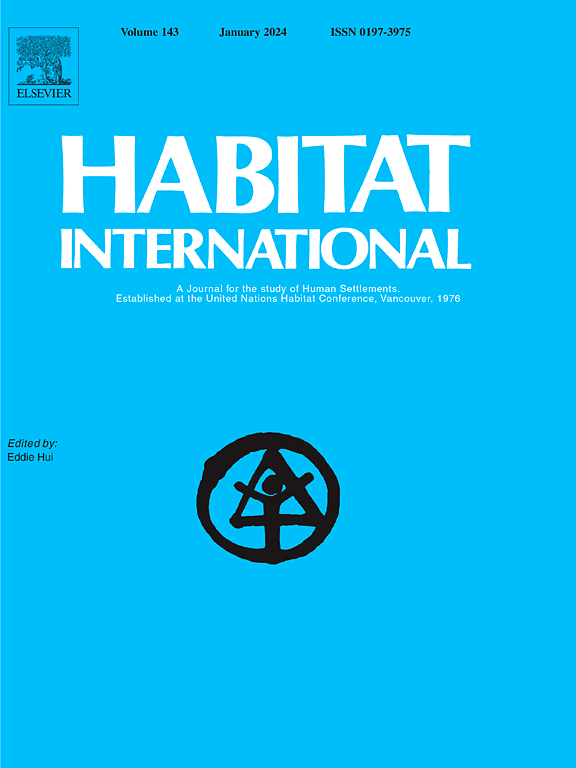建筑环境的文化整合——德黑兰郊区流离失所的巴基斯坦人的案例
IF 7
1区 经济学
Q1 DEVELOPMENT STUDIES
引用次数: 0
摘要
在全球流离失所人数空前增加的情况下,超过1.22亿人现在面临着适应陌生文化和生活环境的挑战。尽管对迁移后文化适应和建筑环境进行了单独的研究,但它们的交集在很大程度上被忽视了。本研究使用扎根理论民族志,历时三年调查了德黑兰附近一个流离失所的巴基斯坦社区,他们的伊朗主人和各自的住所,以及他们的行为。基于这些发现,研究人员开发了一个模型来研究流离失所后建筑环境的文化整合。该研究探讨了建筑环境中的文化适应结果——由内部文化转变和外部因素(如环境、法律和社会背景)塑造的整合、分离和同化。特别是巴基斯坦人口,文化变化很小,影响了他们的空间组织和行为环境。此外,该模型可以帮助从业者和学者解决流离失所人口的建筑环境问题。本文章由计算机程序翻译,如有差异,请以英文原文为准。
Cultural Integration of the Built Environment -the case of displaced Pakistanis on the outskirts of Tehran
Amid an unprecedented rise in global displacement, over 122 million individuals now face the challenge of adapting to unfamiliar cultural and living environments. Despite separate studies on post-displacement acculturation and the built environment, their intersection remains largely neglected. This study used grounded theory ethnography over three years to investigate a displaced Pakistani community near Tehran, their Iranian hosts and their respective dwellings, and the behaviors they harbor. Based on the findings, a model was developed to study post-displacement cultural integration of the built environment. The study explores acculturation outcomes in the built environment—integration, separation, and assimilation—shaped by internal cultural shifts and external factors like surroundings, legalities, and social context. The Pakistani population in particular, exhibited minimal cultural change, influencing their spatial organization and behavior settings. Furthermore, this model can assist practitioners and academics in addressing displaced population's built environment.
求助全文
通过发布文献求助,成功后即可免费获取论文全文。
去求助
来源期刊

Habitat International
Multiple-
CiteScore
10.50
自引率
10.30%
发文量
151
审稿时长
38 days
期刊介绍:
Habitat International is dedicated to the study of urban and rural human settlements: their planning, design, production and management. Its main focus is on urbanisation in its broadest sense in the developing world. However, increasingly the interrelationships and linkages between cities and towns in the developing and developed worlds are becoming apparent and solutions to the problems that result are urgently required. The economic, social, technological and political systems of the world are intertwined and changes in one region almost always affect other regions.
 求助内容:
求助内容: 应助结果提醒方式:
应助结果提醒方式:


